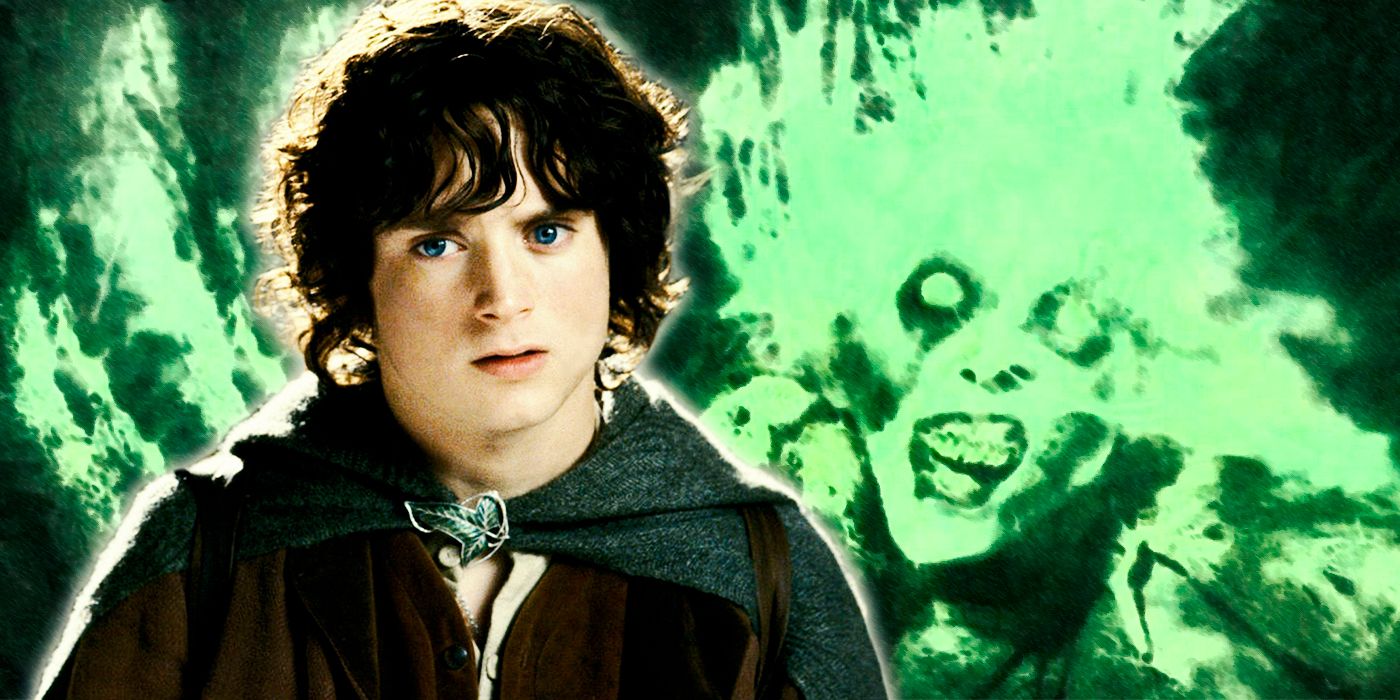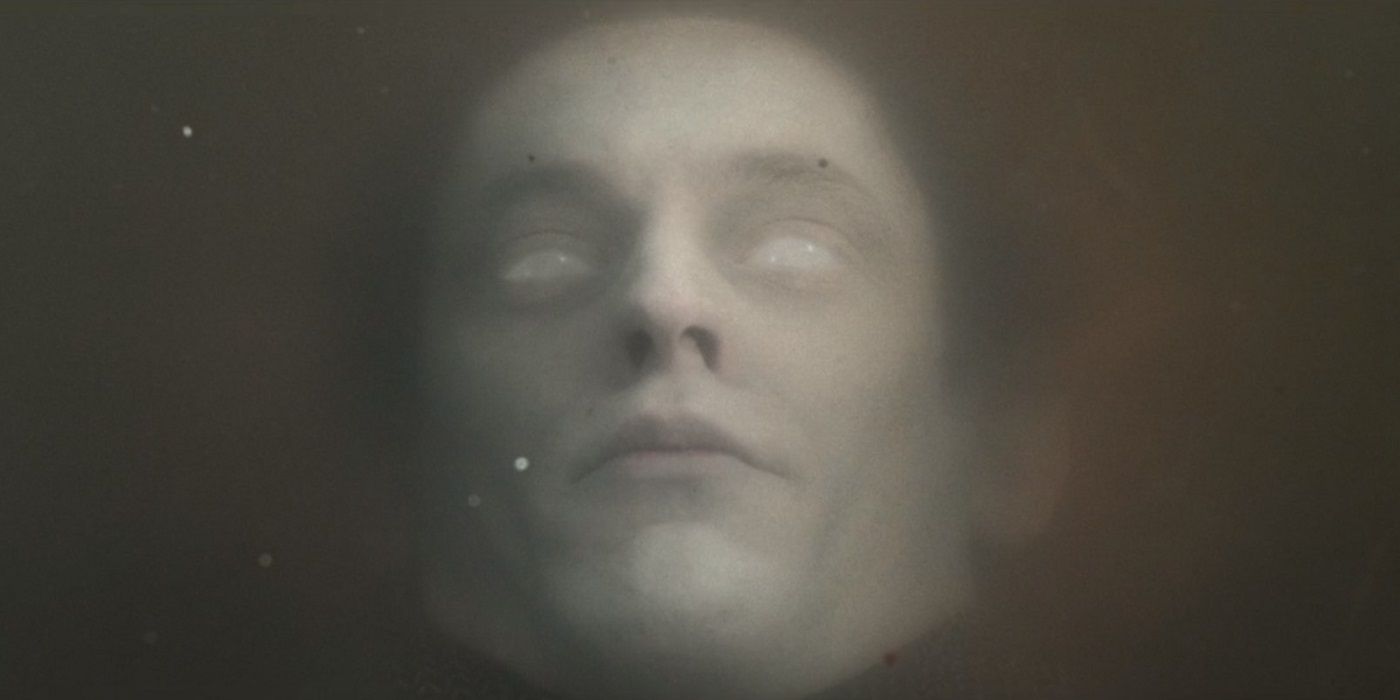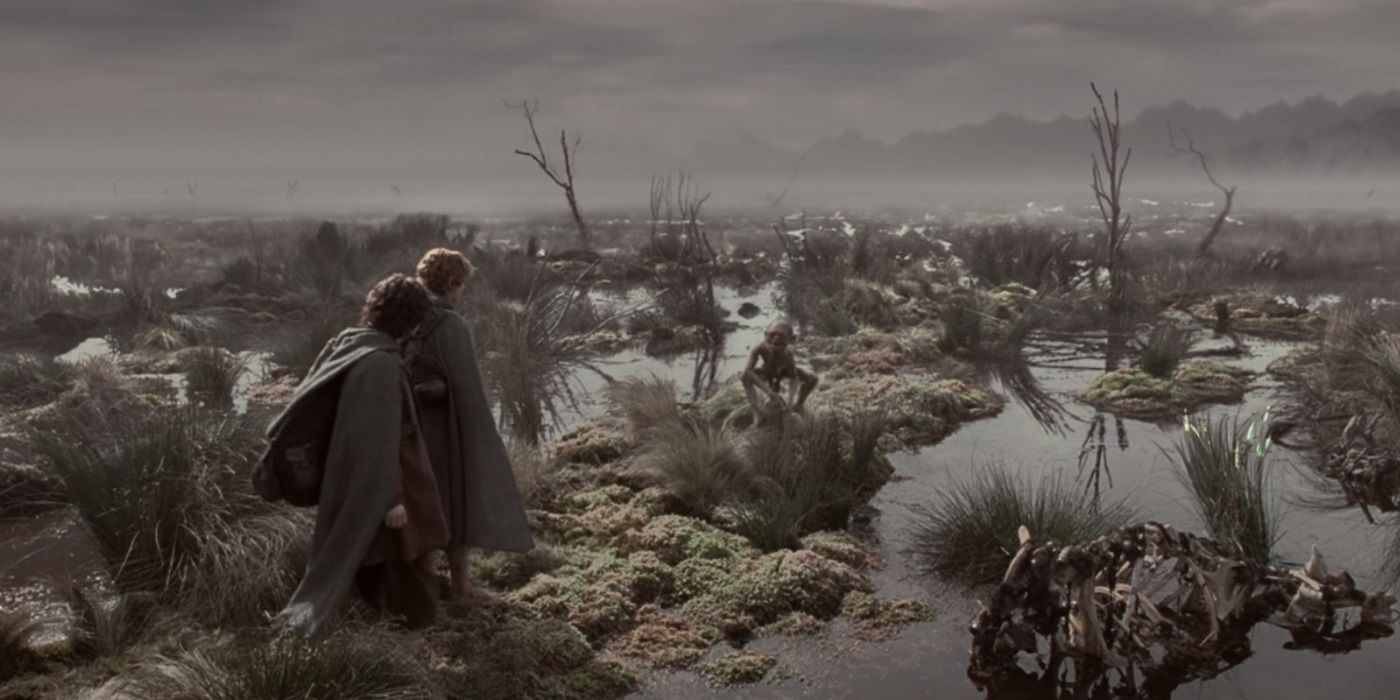The Dead Marshes is one of the more striking passages in J.R.R. Tolkien's The Lord of the Rings trilogy, in part because it's so creepy. The author wasn't largely one for horrific description, and though he ventured into spooky corners of Middle-earth from time to time, it rarely springs to mind when discussing his work. The Dead Marshes -- a haunted swamp that Frodo and Sam pass through on their way to Mordor -- proved an unsettling exception.
Tolkien's descriptions had the luxury of being subtle and used simple visual descriptors to convey the right impression in text. For his celebrated movie adaptation, Peter Jackson had to deliver something with more punch, yet he couldn't lose the strange hallucinogenic quality that the novel conjures so well. His background in horror films proved uniquely suited to the task, making his version of The Dead Marshes even creepier than Tolkien's.
Who Are the Dead in Lord of the Rings' Dead Marshes?
Tolkien himself was a veteran of World War I, with details covered in Humphrey Carpenter's collection The Letters of J.R.R. Tolkien and John Garth's biography Tolkien and the Great War. He entered service reluctantly -- his letters confessed to "too much imagination and little physical courage" -- but participated in the Battle of the Somme before contracting trench fever and being sent home. Tolkien later speculated in his letters that seeing dead men in the mud during the battle may have subsequently influenced his depiction of the Marshes.
Gollum leads Frodo and Sam through the bog in the second chapter of Book Four of The Two Towers, "The Passage of the Marshes." That placement is important, for Book Three -- constituting the first half of the novel -- covered the adventures of the other members of the sundered Fellowship. It encompassed such showstopping moments as Gandalf's dramatic return and The Battle of Helm's Deep, and as Tolkien shifted the story to focus on the Ringbearer, he needed to change dramatic gears. The Dead Marshes made for a quiet observation about the cost of battles like Helm's Deep, as well as presenting far more understated dangers.
In Middle-earth history, The Battle of Dagorlad took place in the Marshes at the end of the Second Age, between the forces of Sauron and The Last Alliance of humans and Elves opposing him. Sauron's army was defeated at great cost, and the victors eventually marched on Mordor itself. (Tolkien cites it in the Appendix for the trilogy, while Jackson depicted the finale of the conflict in the opening scene of The Fellowship of the Ring.) The bog extended after the battle and swallowed up the graves. Gollum warns against the "candles" they carry, which appear as dancing lights in the fog, similar to folk stories about the will-of-the-wisp. Those who follow them get pulled down into the marshes by the corpses and drowned, a risk Frodo runs when he becomes enchanted by the lights. Sam pulls him away before he can succumb and repeats Gollum's warning.
How Peter Jackson Changed Frodo's Dead Marshes Encounter in LOTR
Jackson's background lies in horror movies, having made his name with cult hits like Dead Alive and Bad Taste. He never abandoned those instincts as he moved into mainstream Hollywood filmmaking, starting with 1996's The Frighteners, and those sensibilities cropped up in The Lord of the Rings movies more than once, notably with monsters like Shelob in The Return of the King. The Dead Marshes were ideal for that and, in the process, gave him a chance to heighten the unsettling nature of the encounter. The scene also takes place earlier in the running time, meaning he didn't have to compete with the likes of Helm's Deep and could add a little more razzle dazzle without issue.
While Tolkien contented himself with describing Frodo's reaction to the lights, in Jackson's version, he ultimately succumbs to their lure and falls face-first into the water where the ghosts are waiting for him. They surround him in an instant -- with blank eyes and rotting white faces -- and look sure to claim him before Gollum comes to his rescue. It made manifest what Tolkien only hinted at, providing properly cinematic visuals to accentuate it and letting Gollum play the hero as a precursor to the schism between Frodo and Sam. The director's horror instincts hold true and the result is an already unsettling moment made more overtly terrifying.



